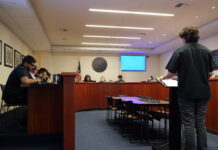On Dec. 3, 2015, the Department of Education announced that it was offering $27.8 million in student debt relief to around 1,300 students who attended Heald College, a chain of campuses under the now-defunct for-profit college system Corinthian Colleges Inc., which includes Everest and WyoTech Colleges. The investigation and subsequent filing of bankruptcy by Corinthian Colleges Inc. resulted in the largest financial failure of a college chain in U.S. history.
An investigation by the Department of Education found that between 2010 and 2014, Heald College misled students regarding job placement rates for a majority of its programs and enacted predatory loan practices against its students, steering thousands of students into loans with interest rates as high as 15 percent. Corinthian Colleges Inc. closed down and sold off a majority of its more than 120 campuses across the country after government agencies fined the corporation almost $30 million. California Attorney General Kamala Harris explained that Corinthian’s marketing material targeted “isolated, impatient people with low self-esteem and few people in their lives who care about them, and who are stuck and unable to see and plan well for their future.”
An estimated 125,000 students who attended any of the closed campuses borrowed roughly $3.2 billion in federal loans since 2010, according to the Associated Press. The student aid website which offers instructions for previous students of Corinthian College campuses said that students may be eligible for federal student loan forgiveness if they attended a Corinthian school that closed on April 27, 2015 or if they believe that they were defrauded by a Corinthian school that “engaged in actions that violated applicable state law — regardless of whether that school closed.”
Joseph A. Smith, recently appointed as Special Master for Borrower Defense and author of a progress report released by the Department of Education, said in his report that 5,379 open borrower defense (BD) claims remain to be addressed. An additional 5,814 BD claims have been processed comprising $75 million in loan relief. Critics say that the Department of Education is not doing enough to address the hundreds of thousands of student debt relief claims.
“The federal government has data on which students took on federal loans to attend which institutions — they could do a much better job of reaching out to borrowers, through loan servicers or otherwise, to make it crystal clear that students who attended Corinthian campuses have an opportunity to get meaningful relief,” Mark Huelsman, a senior policy analyst at the think tank Demos, told Mic.
In the same article, Education Department spokesman Denise Horn responded, “The Office of Federal Student Aid has been contacting and will continue to contact potentially impacted student borrowers to provide clear information about their options, including loan discharge applications, in addition to providing enhanced information on the Department’s website.”
Fifteen student debtors who attended these campuses rallied with the organization Debt Collective that claim to leverage “collective power by offering debtors a shared platform for organization, advocacy, and direct action.” The Corinthian students had initially called themselves the Corinthian 15 and their goal was to raise awareness by declaring a debt strike and refusing to pay their federal loans. Nine state attorney generals backed the claims made by the students, who now total over 100.
A settlement for the forgiveness of $480 million private loans was reached last year between the Education Depart, the Consumer Financial Protection Bureau and the ECMC Group, a student debt collector and non-profit organization whose controversial $24 million buy-off of Corinthian campuses with the goal of turning them into the country’s largest non-profit career education system was met with skepticism by lawmakers and student advocates alike.








